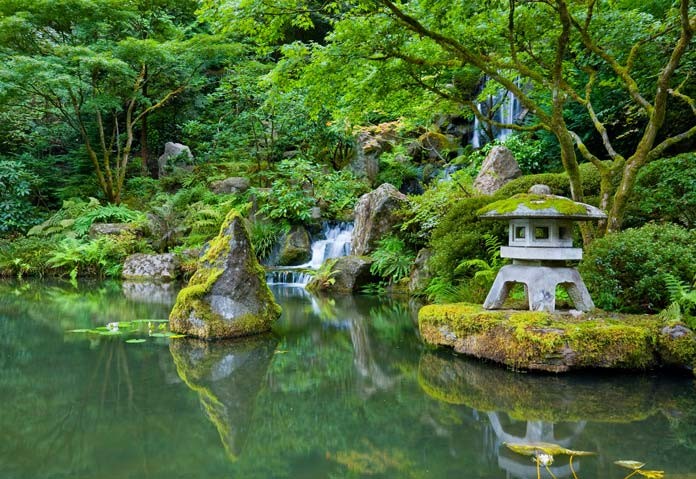
Located in Portland, Oregon, are the breathtaking Japanese Gardens. Over 300,000 people visit these lovely places annually to experience a scene like no other. The Portland Japanese Garden has five sub-garden areas, each with their own distinct and beautiful landscaping and ideas behind them to create feelings of peace or tranquility. Three elements were considered when creating the area. Water, which is life-giving, stone, which is, considered the “bones” of the area and of course all the beautiful plants and vegetation, which are considered the tapestries of the entire project. Lesser elements such as bridges, water basins, arbors, and stone lanterns have also been incorporated, adding perfect details throughout. The Portland Japanese Garden is more than just a beautiful place to visit.
Table of Contents
Portland Japanese Garden
The Japanese feel that we need to feel a part of nature, as in reality we really are part of it anyways, so feelings of peace, harmony, and tranquility are the desired effects of visiting such a garden, not just the view. Our other senses and feelings are stimulated by the beauty and design of a place that reflects how we feel in being a part of this beauty in nature.
The Flat Garden
The overall acreage of the entire place is about 5 and ½ acres to explore. Five different areas make up the entire Portland Japanese Garden. The Flat Garden was created to show the flat plains can be decorated with trees, shrubs, and flowers to create depth in a space. A Japanese lace leaf maple graces the Flat area, and is more than a century old. The weeping cherry is absolutely stunning when the flowers bloom, and is a favorite of the Flat place and design. Sliding shoji doors frame the entirety, and if you are standing on the outside of the doors looking in, it is as if the Flat garden is being framed like a picture, offering some insight and creative thinking.
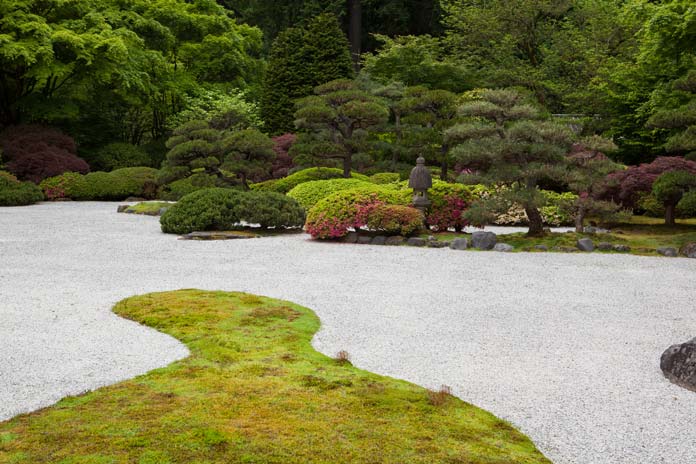 The Strolling Pond Garden
The Strolling Pond Garden
This area looks like something out of a fairy tale. There are two ponds, and upper and a lower pond that are connected by a stream. The Upper Pond has a Moon Bridge, and the lower has a zig-zag bridge with a peaceful waterfall in the backdrop. These types of areas were inspired by the wealthy during the Edo period from 1603 until 1867. Poets, artists, and writers often find inspiration here. The landscape appears much taller than the Flat garden, as huge trees in various colors in spring and fall litter the landscape with greenery and bright colors. The water offers tranquility, and you can stroll down the paths or over the bridges to better your experience among the ponds and stream.
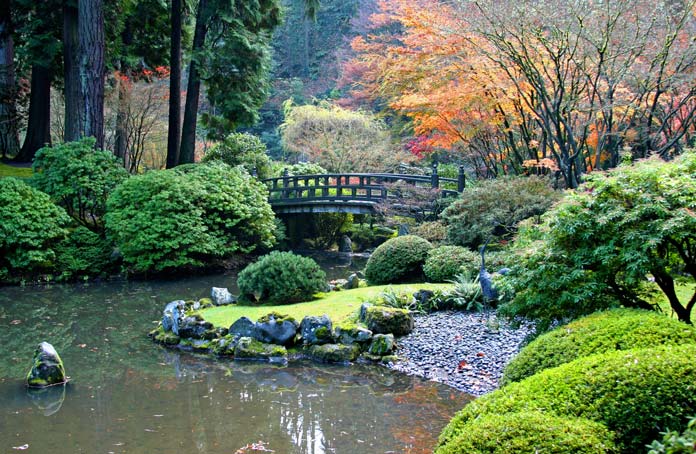 The Tea Garden
The Tea Garden
The Tea area promotes a harmony with all things. A wooded setting and landscape provide a different view and feel in the Tea garden. A stepping stone path decorated with lanterns leads you to the teahouse. The path represents one that we take through life, a journey of sorts. Upon reaching the teahouse guests can stop at the water basin to rinse their hands and face, thus removing dirt and leaving the dust of the world behind. The teahouse is used to demonstrate the Japanese tea ceremony and is used for special occasions.
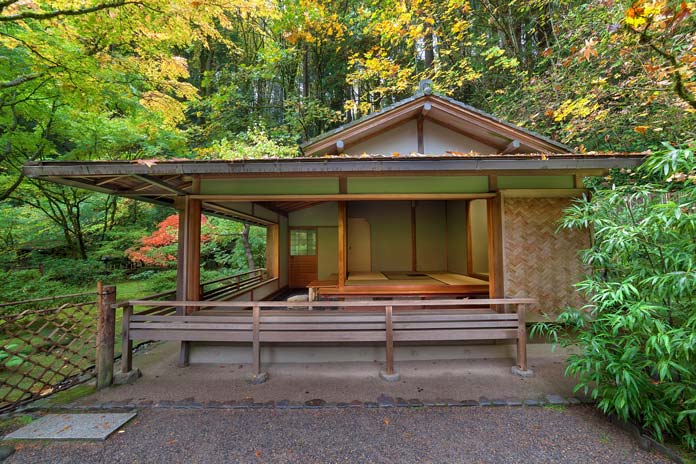
The Natural Garden
The Natural space of the area is the most recent addition and is also the most contemporary. There are many plants here that are not considered typical of a Japanese garden, but the blend works nicely and provides an area to reflect in. It was originally named the Hillside Garden, due to the steep terrain. There are parts where the trees are dense, making it feel a bit more like wilderness, yet it is still beautiful and quiet, a perfect place to sit and ponder the world around you. Notice how the trees all lean slightly towards the life-giving waterway in this area, proving energy and life to you through nature.
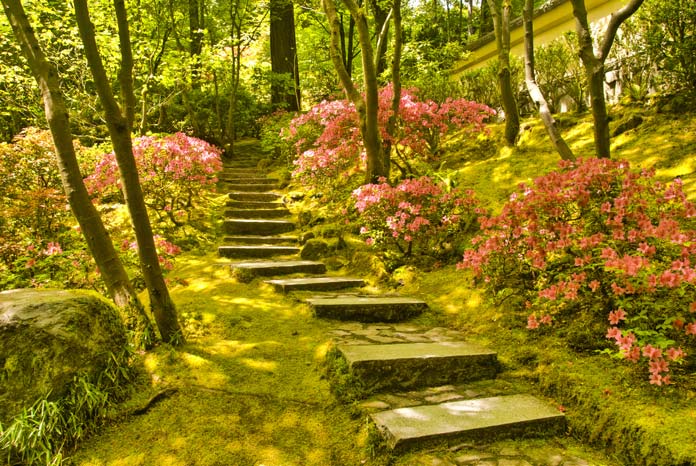
The Sandstone Garden
This area is also known as a dry landscape, having raked sand and gravel. These types of places also have been called Zen gardens, to discover the “beauty of a blank space.” The Sandstone area is geared more towards the art of contemplation more than anything else. It gives you a space to listen and to think. This style has been part of many monasteries, where abbots could come to care for the area and to contemplate in the quiet of some alone time, which you can experience here.
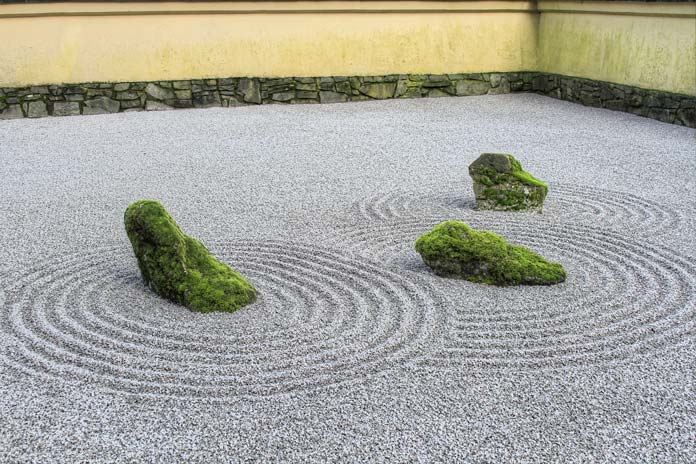
The Best Times to Visit
The Portland Japanese Garden will reopen March 1st, 2016 after completing the first several months on their new project called the Cultural Crossing expansion project. The beauty of these delightful displays of nature are wonderful to see at any time of the year, as each season offers a new and unique view of the changing gardens. Spring is when you can see the cherry blossoms, a visitor favorite, and summer offers nice shade trees and a warm environment in which to explore. Fall offers another burst of colors before the garden is stripped down to its quiet and white winter ambiance.
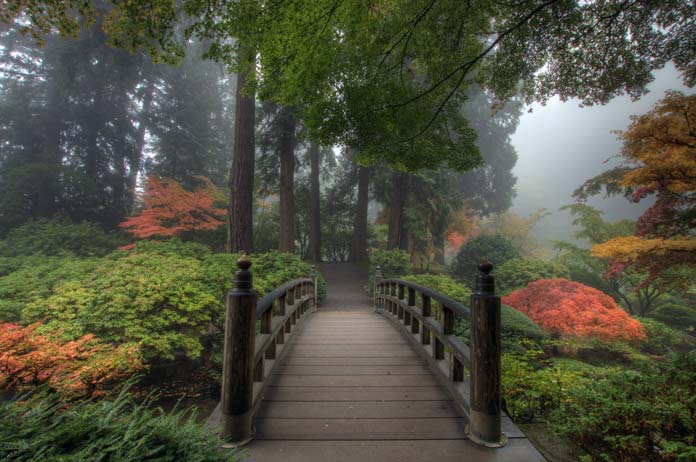
Tour the Beauty
Public tours of the grounds are offered up until September, and are free of charge. You can stroll along with the group as long as you wish, and leave when you want to. No reservations are needed, and this provides a great way to learn about this magical place that so many come to experience. Come to the Portland Japanese Garden and find your peace and tranquility among the chaos of a busy life in this lovely place.



